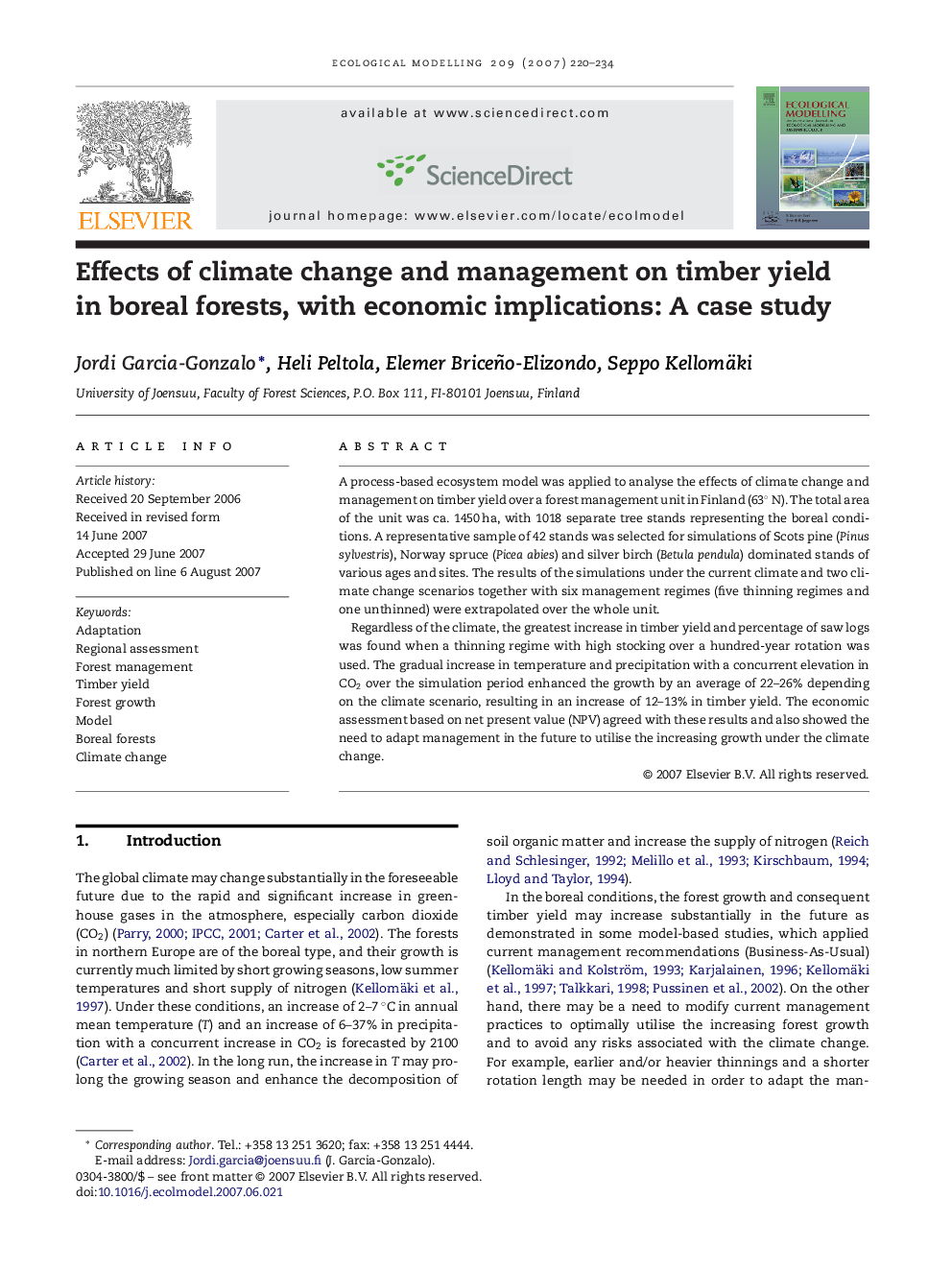| Article ID | Journal | Published Year | Pages | File Type |
|---|---|---|---|---|
| 4378524 | Ecological Modelling | 2007 | 15 Pages |
A process-based ecosystem model was applied to analyse the effects of climate change and management on timber yield over a forest management unit in Finland (63° N). The total area of the unit was ca. 1450 ha, with 1018 separate tree stands representing the boreal conditions. A representative sample of 42 stands was selected for simulations of Scots pine (Pinus sylvestris), Norway spruce (Picea abies) and silver birch (Betula pendula) dominated stands of various ages and sites. The results of the simulations under the current climate and two climate change scenarios together with six management regimes (five thinning regimes and one unthinned) were extrapolated over the whole unit.Regardless of the climate, the greatest increase in timber yield and percentage of saw logs was found when a thinning regime with high stocking over a hundred-year rotation was used. The gradual increase in temperature and precipitation with a concurrent elevation in CO2 over the simulation period enhanced the growth by an average of 22–26% depending on the climate scenario, resulting in an increase of 12–13% in timber yield. The economic assessment based on net present value (NPV) agreed with these results and also showed the need to adapt management in the future to utilise the increasing growth under the climate change.
